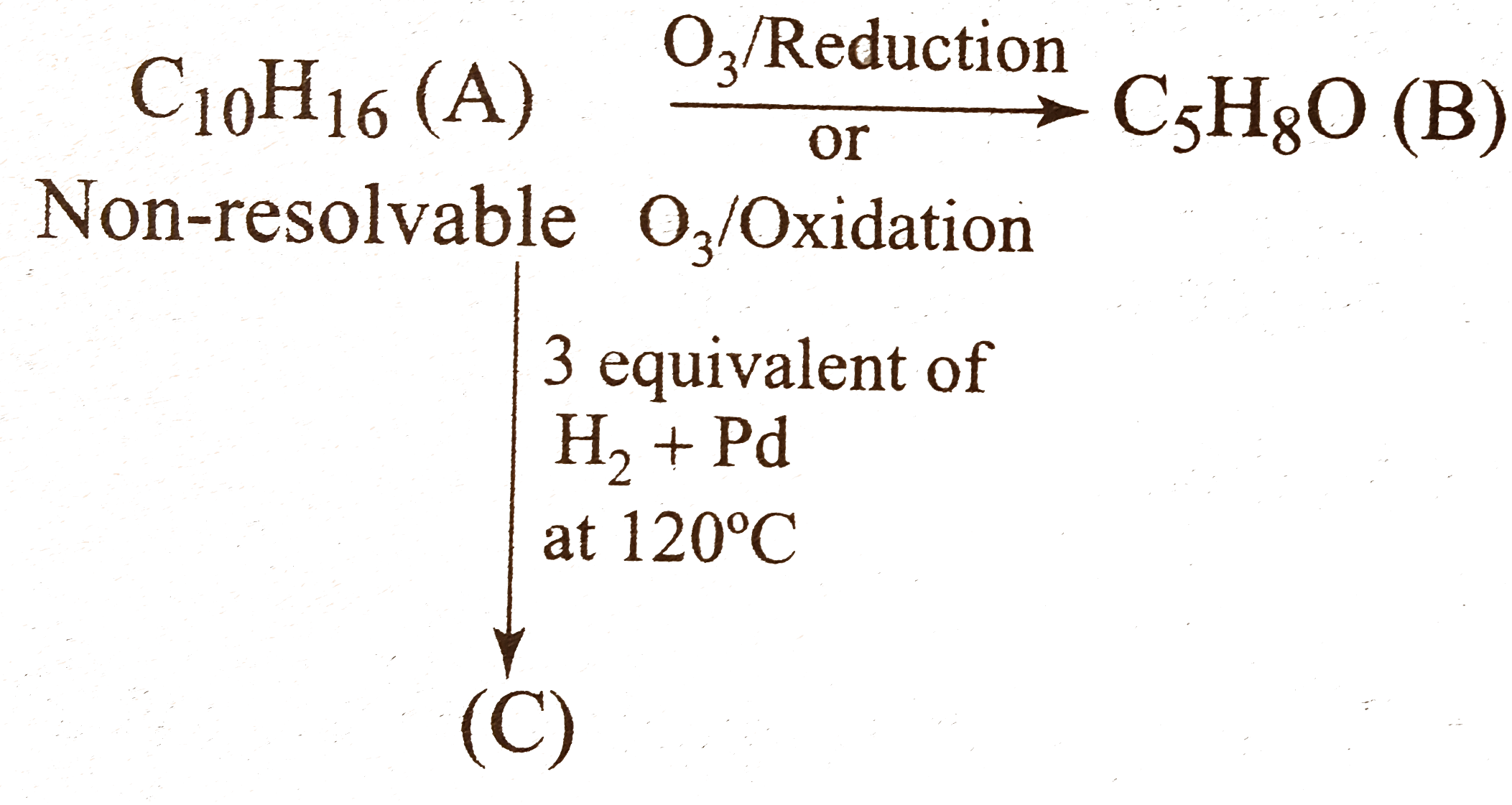
a. Write all the possible structures of (A) and (B).
b. Write all the possible strutucres of (A) and (B), if both are resolvable.
Video Solution
Text Solution
a. Degree of unsaturation in (A):
⇒(2nC+2)−nH2=22−162=3∘
Degree of unsaturation in (B):
Discard oxygen and find degree
⇒(2nC+2)−nH2=12−82=2∘
Number of C atome in (A)=10
Number of C atoms (B)=5.
Therefore, 2mol of (B) have been formed.
2∘ of unsaturation in (B) means one keto group and one ring. If aldehyde group is obtained in reductive ozonolysis, then in oxidative ozonolysis a different product. i.e., acid will be obtained.
However, if a keto group is obtained in reductive ozonolysis, then same keto group will be obtained in oxidative ozonolysis. Accordingly, the possible structures of (B) and, hence, (A) may be :

Since on hydrogenation only 1mol of H2 will be required, this structure is not possible because cyclopentane ring is stable and does not undergo reduction at 120∘C. Similarly, four − membered ring with one methyl group is also not possible because cyclobutane ring is also stable and does not undergo reduction at 120∘C.
Other possiblities:
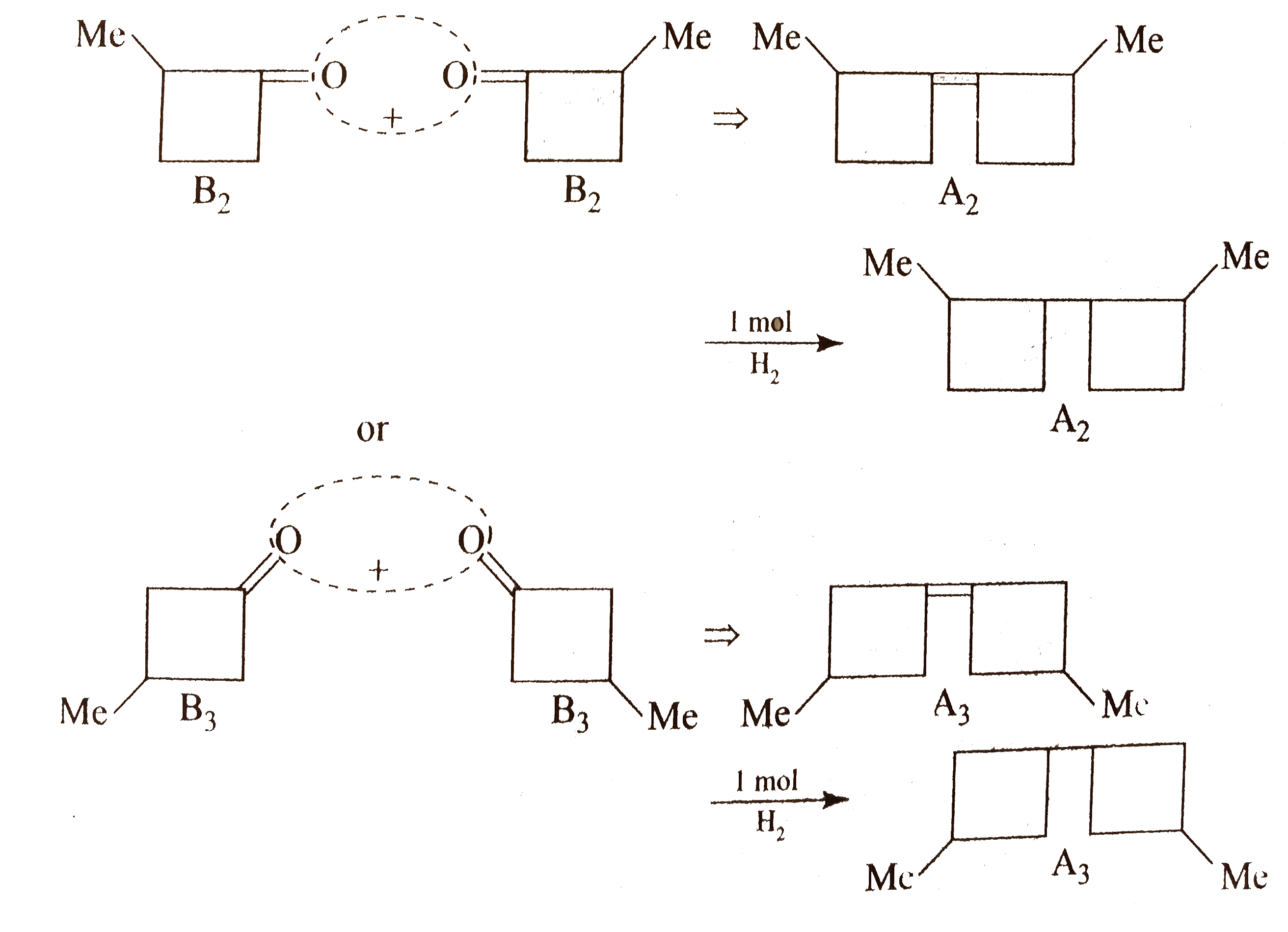
All the structures B1,B2B3,A1,A2,A3,C1,C2and C3 are not possible.
Only possibility left is alkene with cyclopropane ring.
The alkene of the type 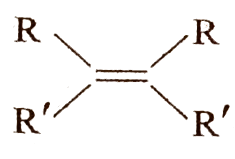
Compound (A) can be :
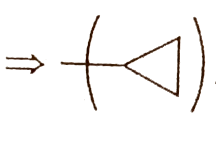
(C) is obtained when (C1−C3) bond breaks 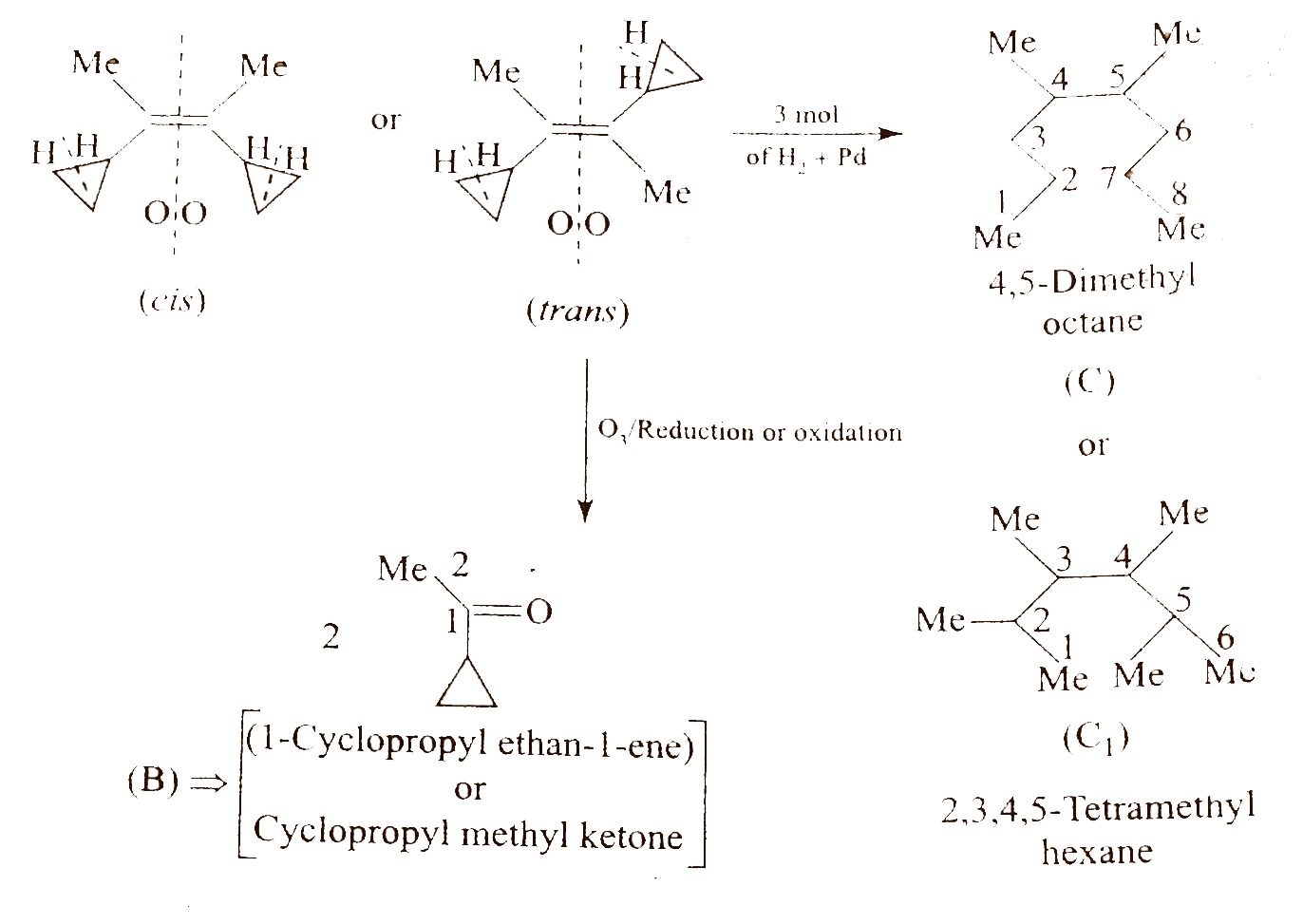
(C1) is obtained when (C2−C3) bond breaks 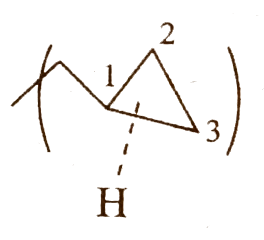 during hydrogenation of A.
during hydrogenation of A.
Both (A) and (B) are non− resolvable ( optically inactive ). Other possible structures for (A) can be as follows : 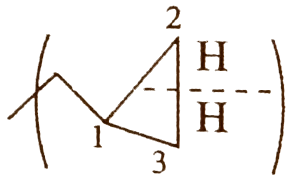
Four structures of (A) are possible if both (A) and (B) are non− resolvable.
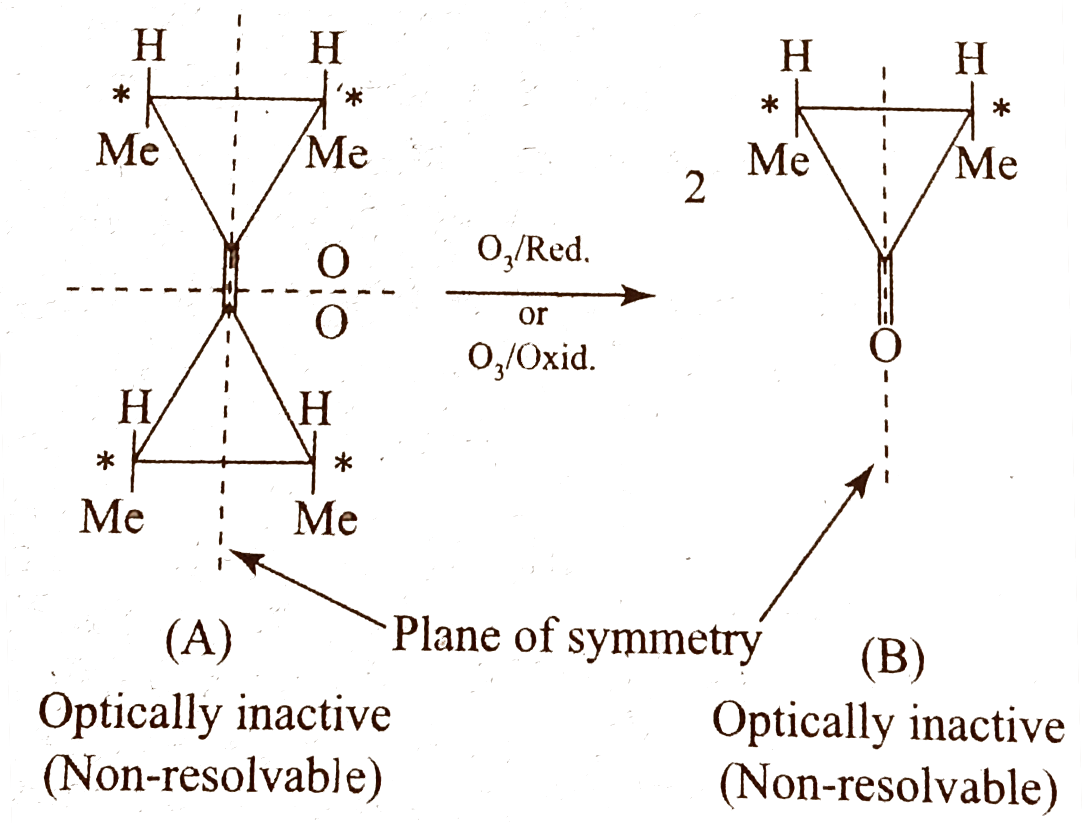
b. If both (A) and (B) are resolvable ( optically active ) then,

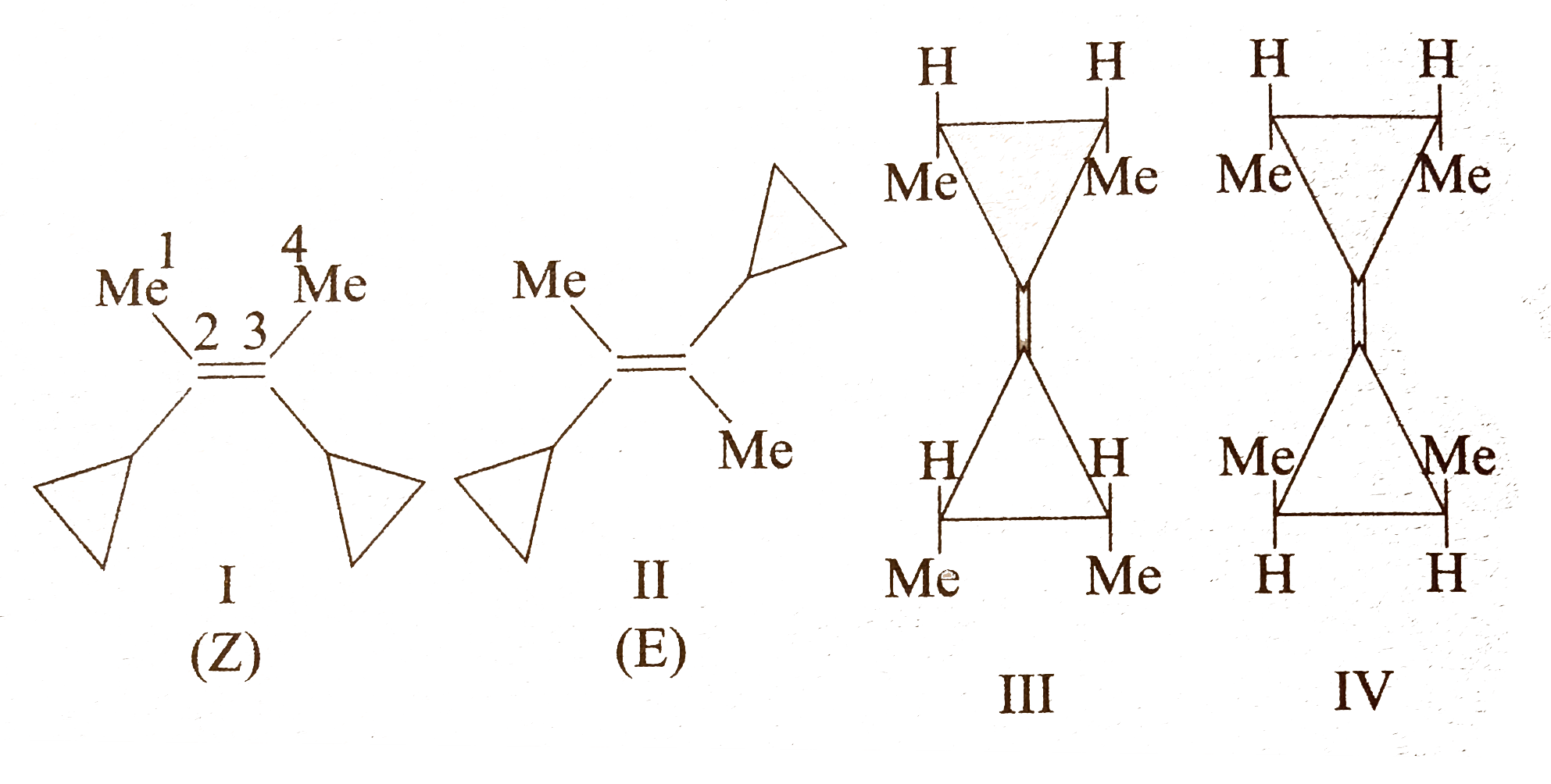
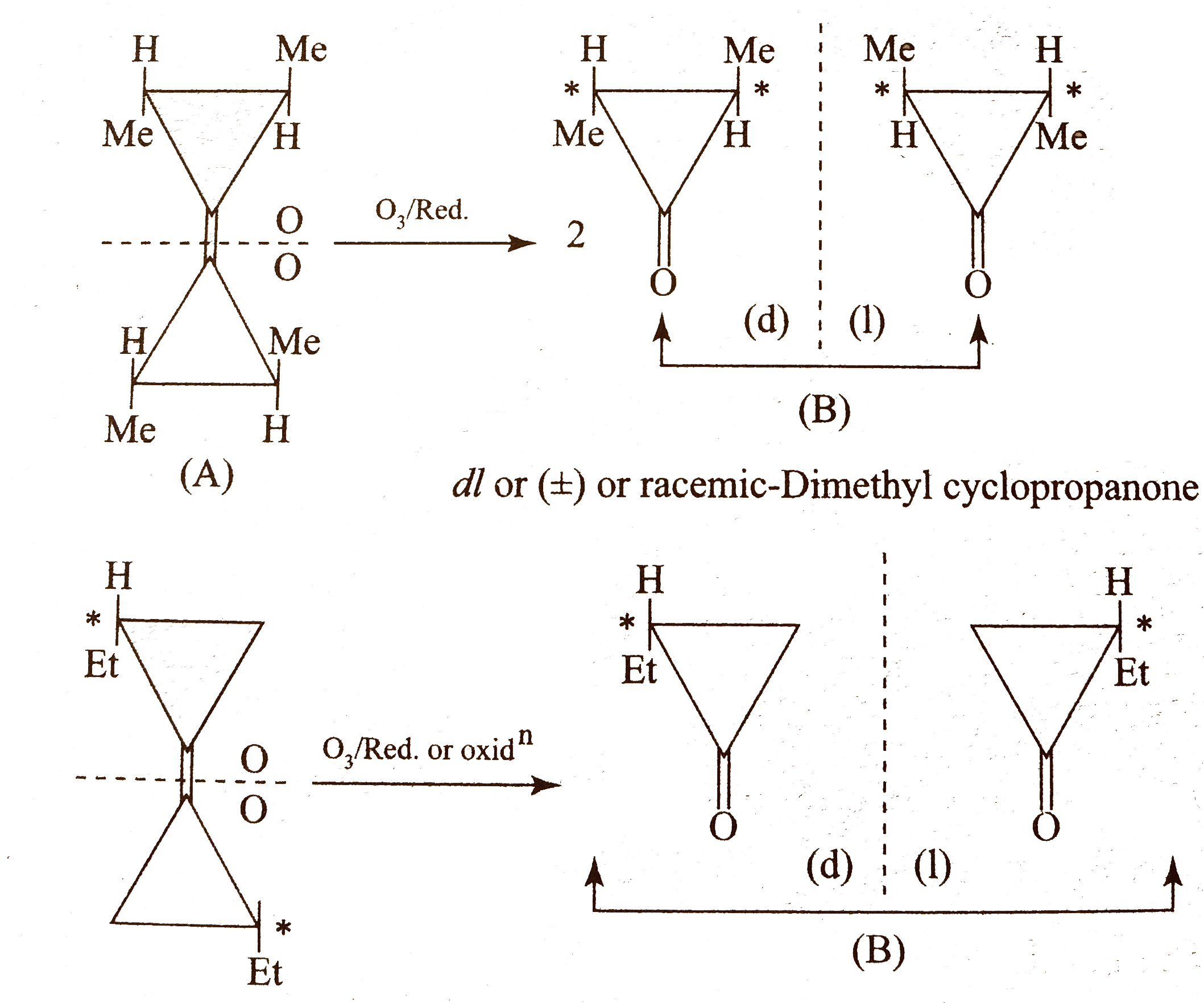
|
Topper's Solved these Questions
- ALKENES AND ALKADIENESBOOK - CENGAGE CHEMISTRYCHAPTER - ALKENES AND ALKADIENESEXERCISE - EXERCISES
29 Videos
- ALKENES AND ALKADIENESBOOK - CENGAGE CHEMISTRYCHAPTER - ALKENES AND ALKADIENESEXERCISE - linked Comprehension Type
38 Videos
- ALKENES AND ALKADIENESBOOK - CENGAGE CHEMISTRYCHAPTER - ALKENES AND ALKADIENESEXERCISE - Single correct Answer
14 Videos
- ALKANES AND CYCLOALKANESBOOK - CENGAGE CHEMISTRYCHAPTER - ALKANES AND CYCLOALKANESEXERCISE - Archives
13 Videos
- ALKYNESBOOK - CENGAGE CHEMISTRYCHAPTER - ALKYNESEXERCISE - Exercises (Archives - Analytical and Desriptive Type)
4 Videos
Similar Questions
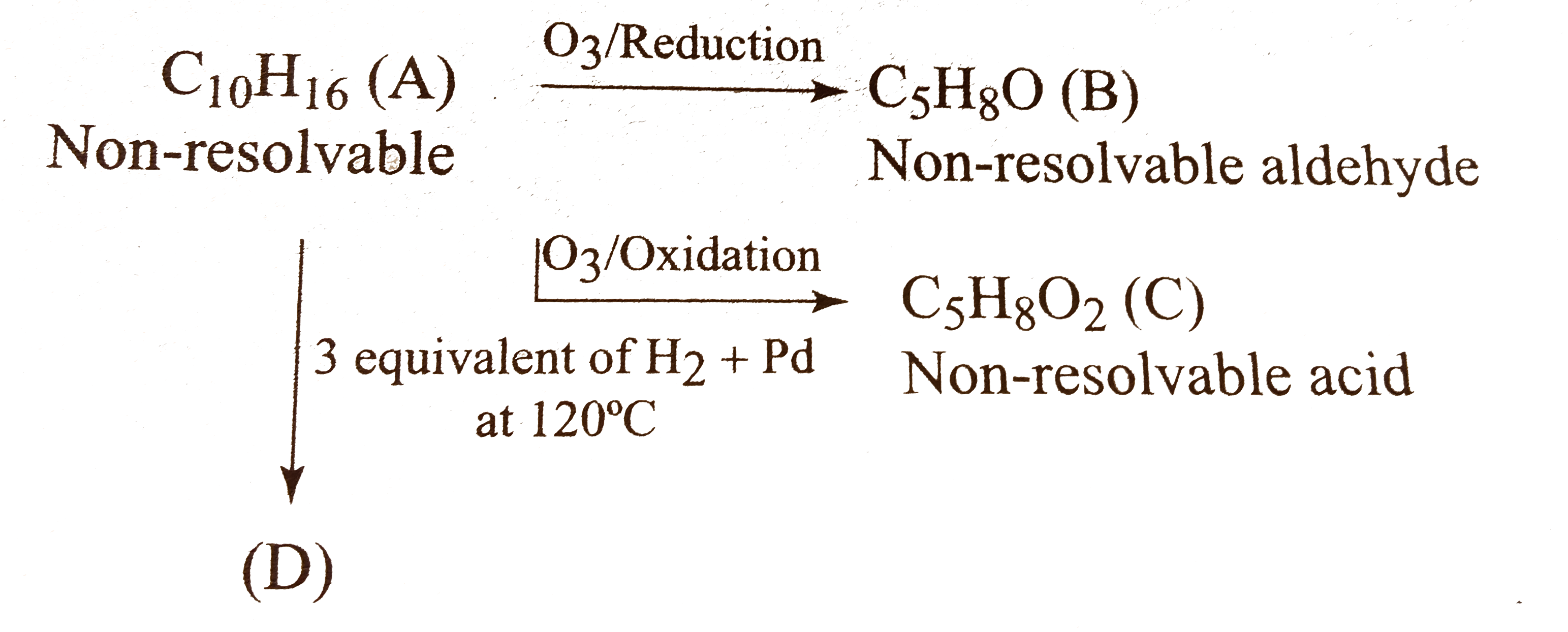
a. Write all the possible structures of (A),(B) and (C)
b. Write all the possible structures of (A),(B), and (C) if all are resolvable.
c. Write the possible structures of (D) in both cases.
View SolutionWrite all the possible subsets of A ={5,6}.
View SolutionWrite down all the possible subsets of {1,3}
View SolutionWrite do,vn all the possible subsets of {p, q}
View SolutionWrite down all possible factors of 3x2y.
View SolutionWrite down all possible factors of 12x2.
View SolutionWrite down all possible subsets of ϕ.
View SolutionWrite down all possible subsets of A={2,3}
View SolutionWrite down all possible subsets of A={4}.
View SolutionWrite dovvn all the possible subsets of {x, y, z}
View Solution
